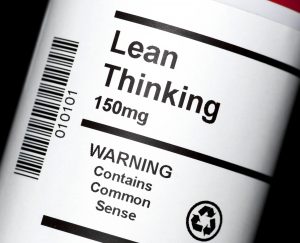
Now you are here, let us get the introductions out of the way. What is Lean Six Sigma? It is a uniquely customer-focused strategy for process improvement. It uses management techniques specifically designed to reduce the probability of error and defect, while improving business performance. Why do we like it? Because it’s lean.
Lean Six Sigma combines Lean manufacturing and enterprise with Six Sigma. The objective is eliminating the eight kinds of waste (also known as Muda) that plague businesses. Let’s quickly recap what the Muda are:
Muda
- Inventory;
- Waiting;
- Transportation;
- Motion;
- Over-production;
- Over-processing;
- defects;
- Skills.
Lean Six Sigma is a relies on team-based effort to improve a business’s performance, systematically eliminating waste in addition to implementing innovative measures for process improvement.
Collaborate!
Lean Six Sigma relies on collaboration to be truly beneficial. There are several tiers of awareness and training, called Belts, for you to consider for your staff. Each Belt has its own skillset and focuses on particular elements of Lean manufacturing, enterprise, and Six Sigma.
Belts?
What are the belts? They follow a system similar (but not the same) as Karate. The idea is that flexing your Six Sigma skill set makes you, consequently, proficient in the martial arts of process improvement!
Basic training gets you a Yellow Belt, while Green Belts will be also trained to focus on tools usage, DMAIC, and Lean principles application. Black Belts are more experienced and generally act as full-time project leaders. They often have several years’ experience and most likely have contributed to many projects. Finally, the highest tier, MBB (or Master Black Belt, to the uninitiated), is a Black Belt with several years’ experience in addition to being qualified to teach Six Sigma.
You can learn more about training options here if you are interested.
Get Started!
How do you get started? Firstly, you need to have a valid reason to use Lean Six Sigma methodology when working with a business to improve their production processes. You need a Burning Platform, which establishes the necessity for using Lean principles. This is your reason (or ‘why’) for which something is done, and it should, therefore, represent the goals you have set.
An example of a valid reason would be if your company were suffering high-profit losses on account of defective products as a result of variation in the components used to make those products. Rather than relying on ‘gut feelings’, you can systematically correct this by identifying problem areas and resolving them.
Get Organised!
Remember to organise your resources properly and use them effectively. We recommend training one or more staff members in Six Sigma strategy. Remember, the more you invest, the better your outcome, because by investing in staff training you will have your own dedicated practitioners. This approach ensures your business maintains current success and continues to achieve more in the future.
You may be aware of the individual benefits of Lean and Six Sigma methodologies but when combined their rewards are multiplied. Most of all, it adds value to any business. Lean Six Sigma is the answer you and many companies around the world have been searching for to aid process improvement and help you deliver excellent services for your customers.









No responses / comments so far.